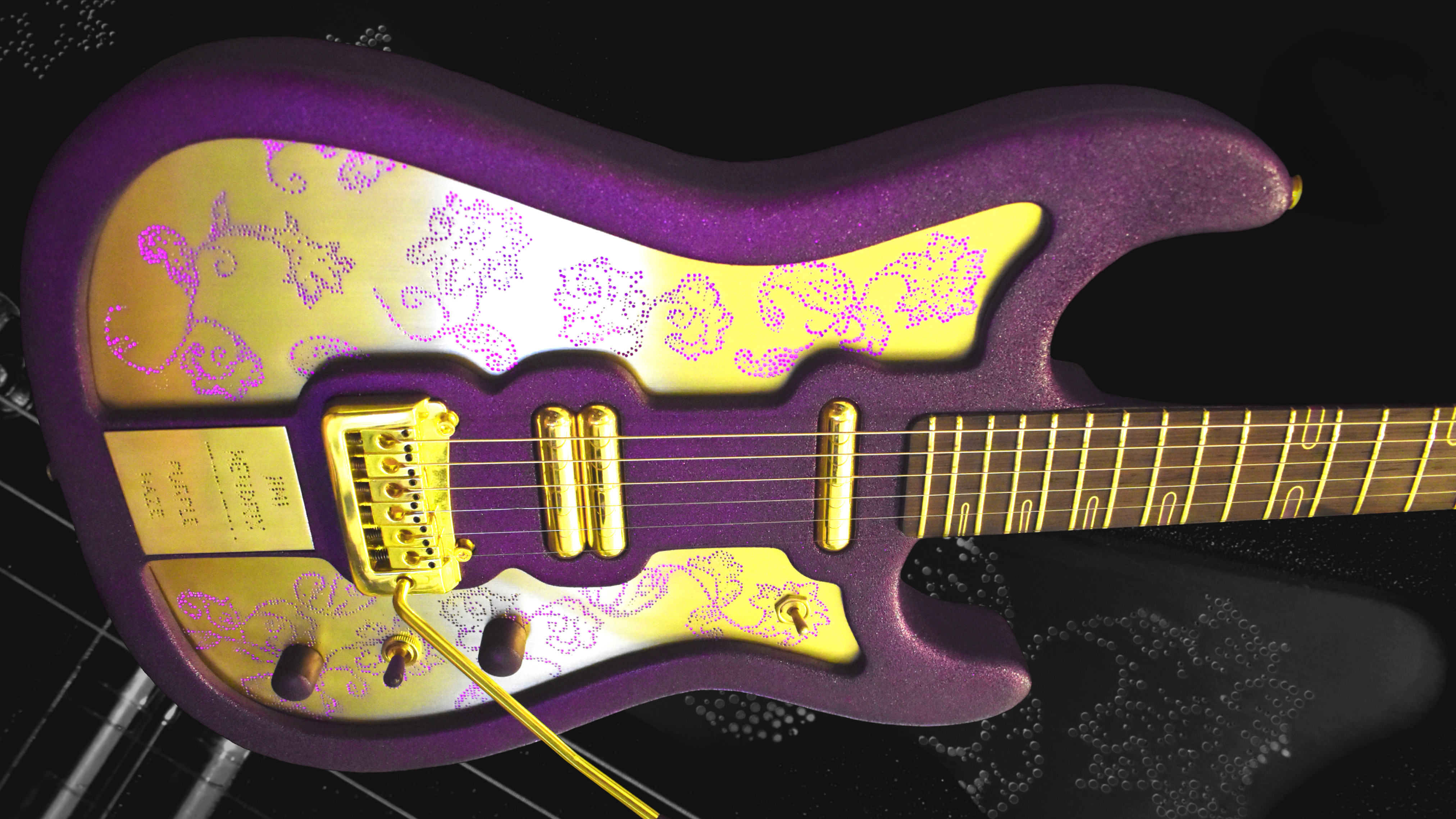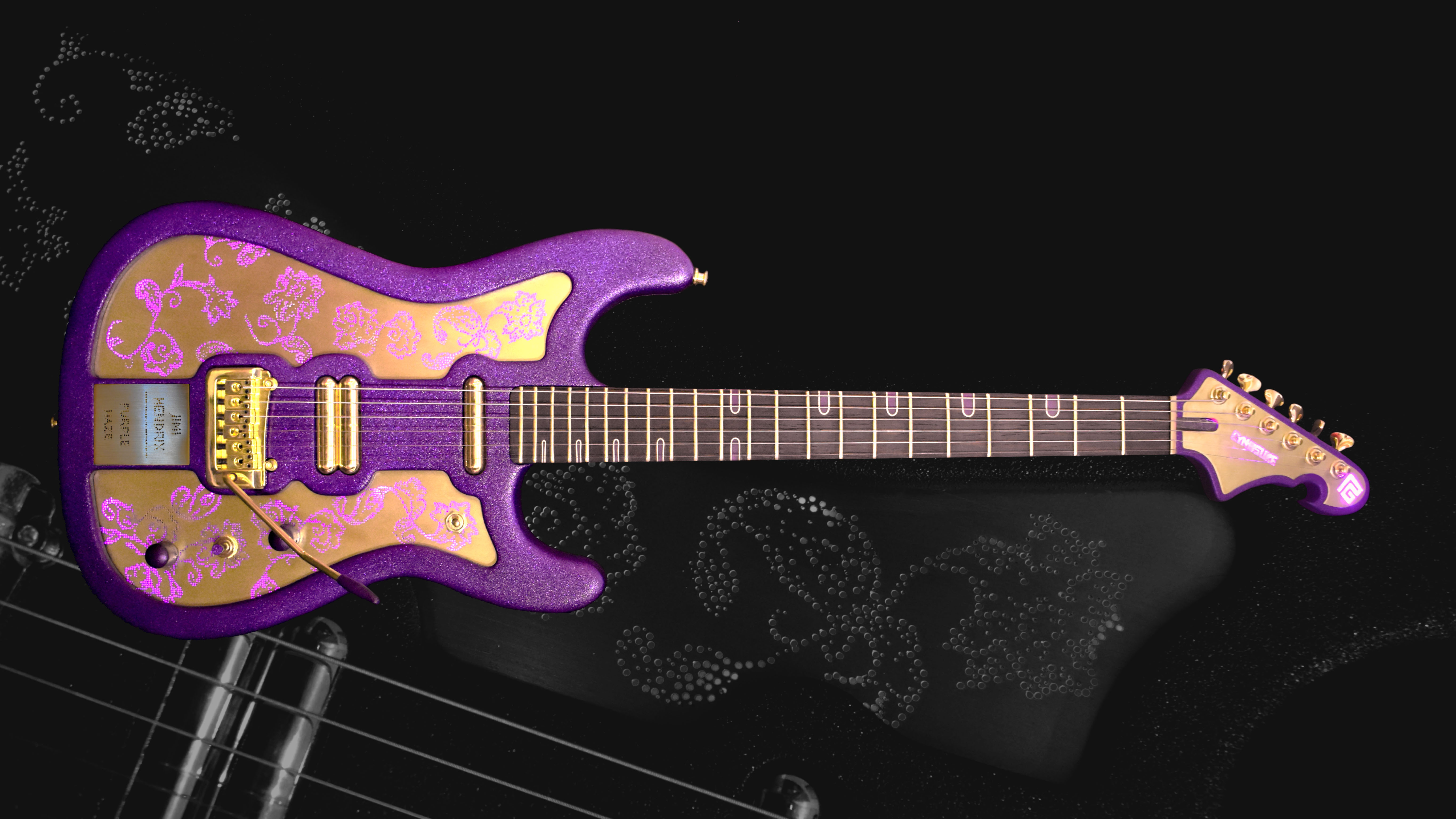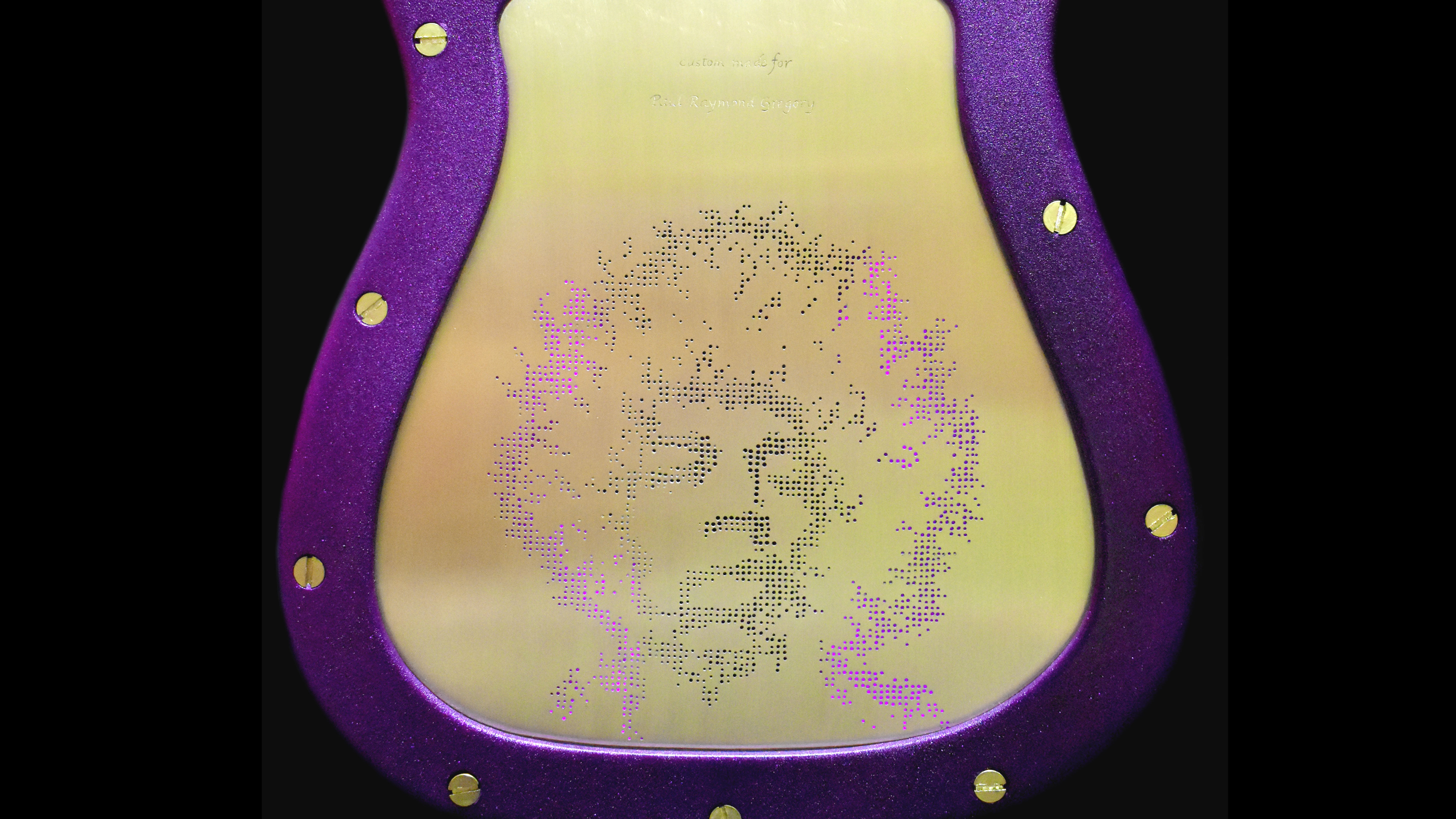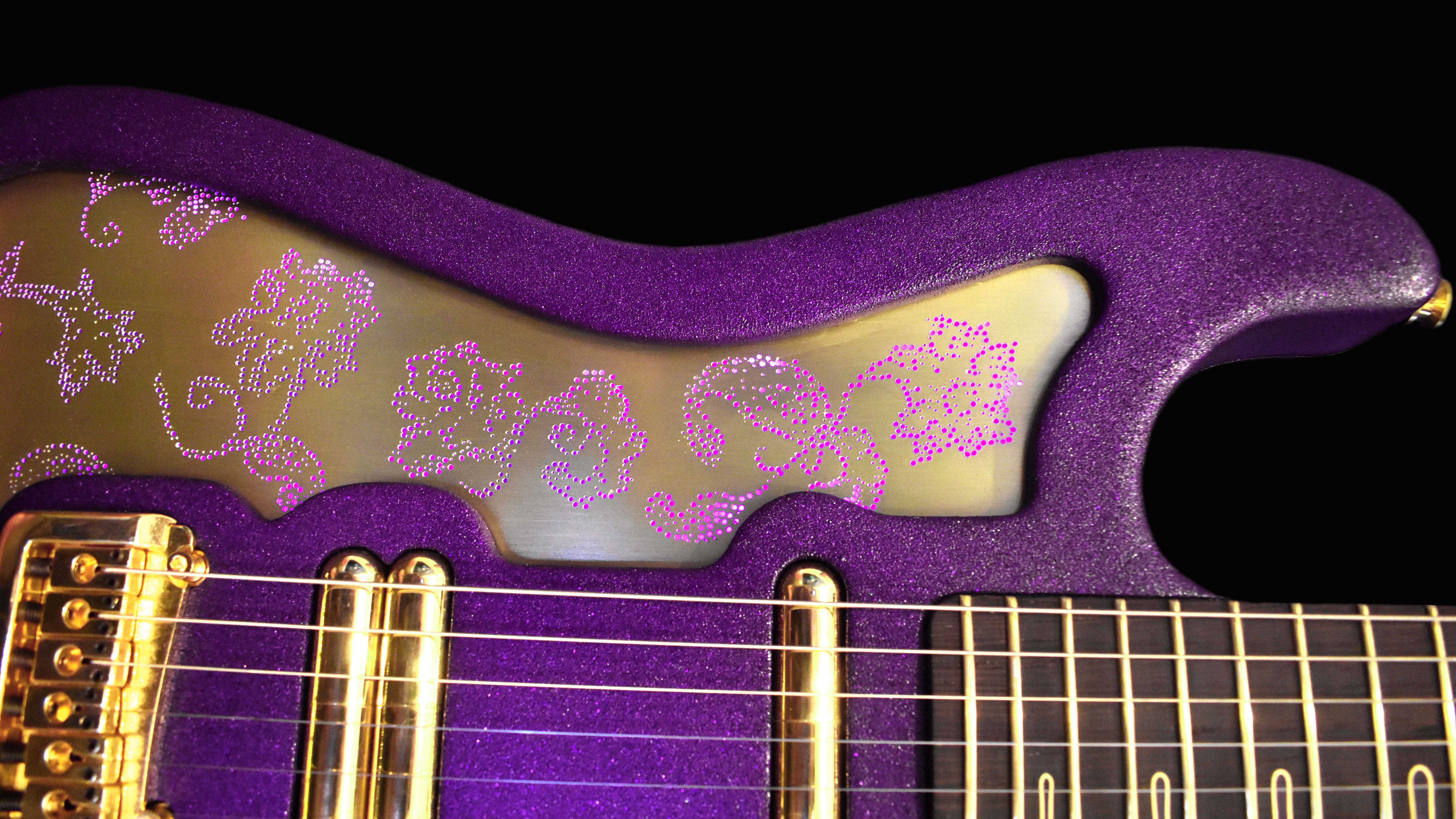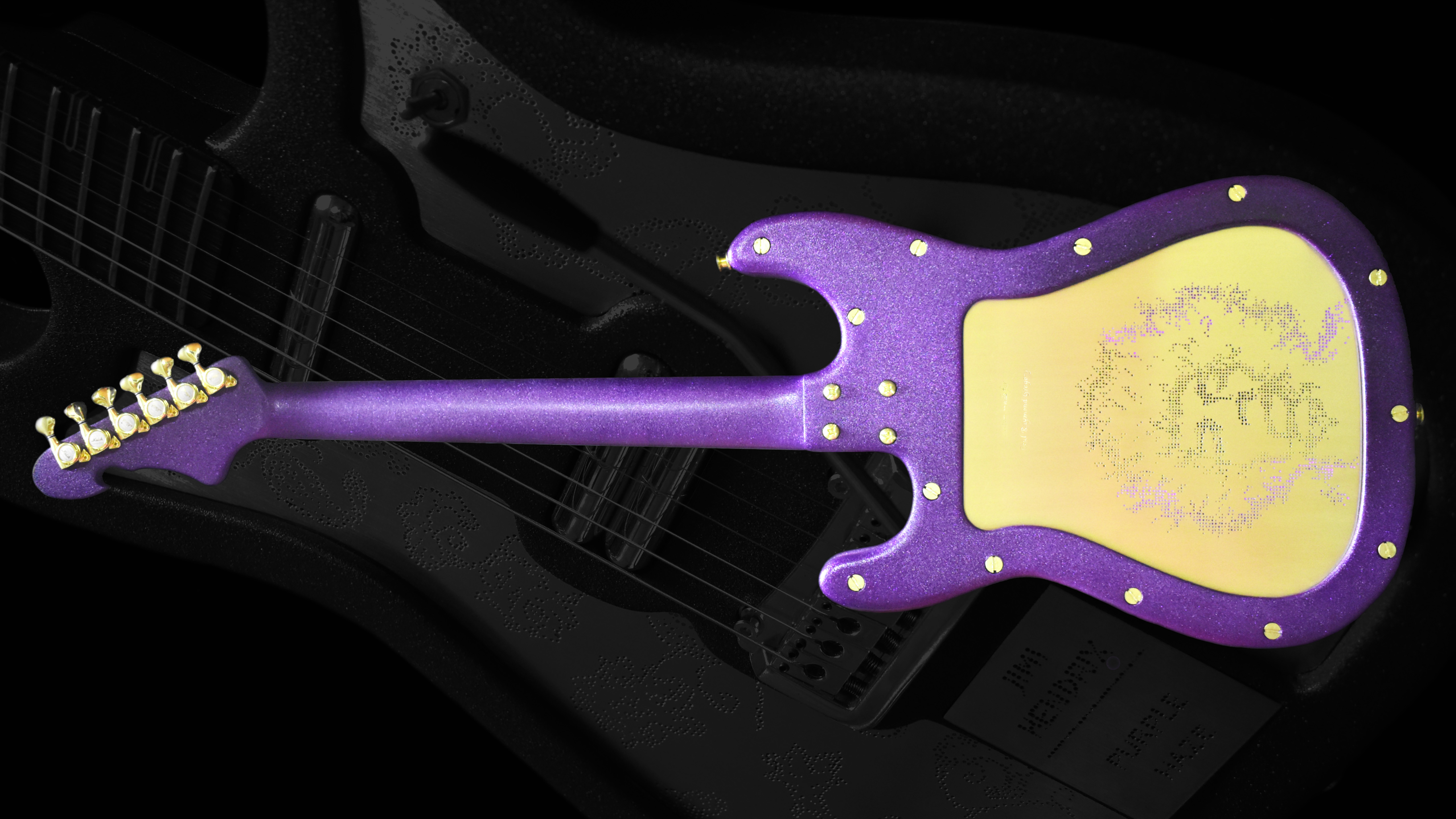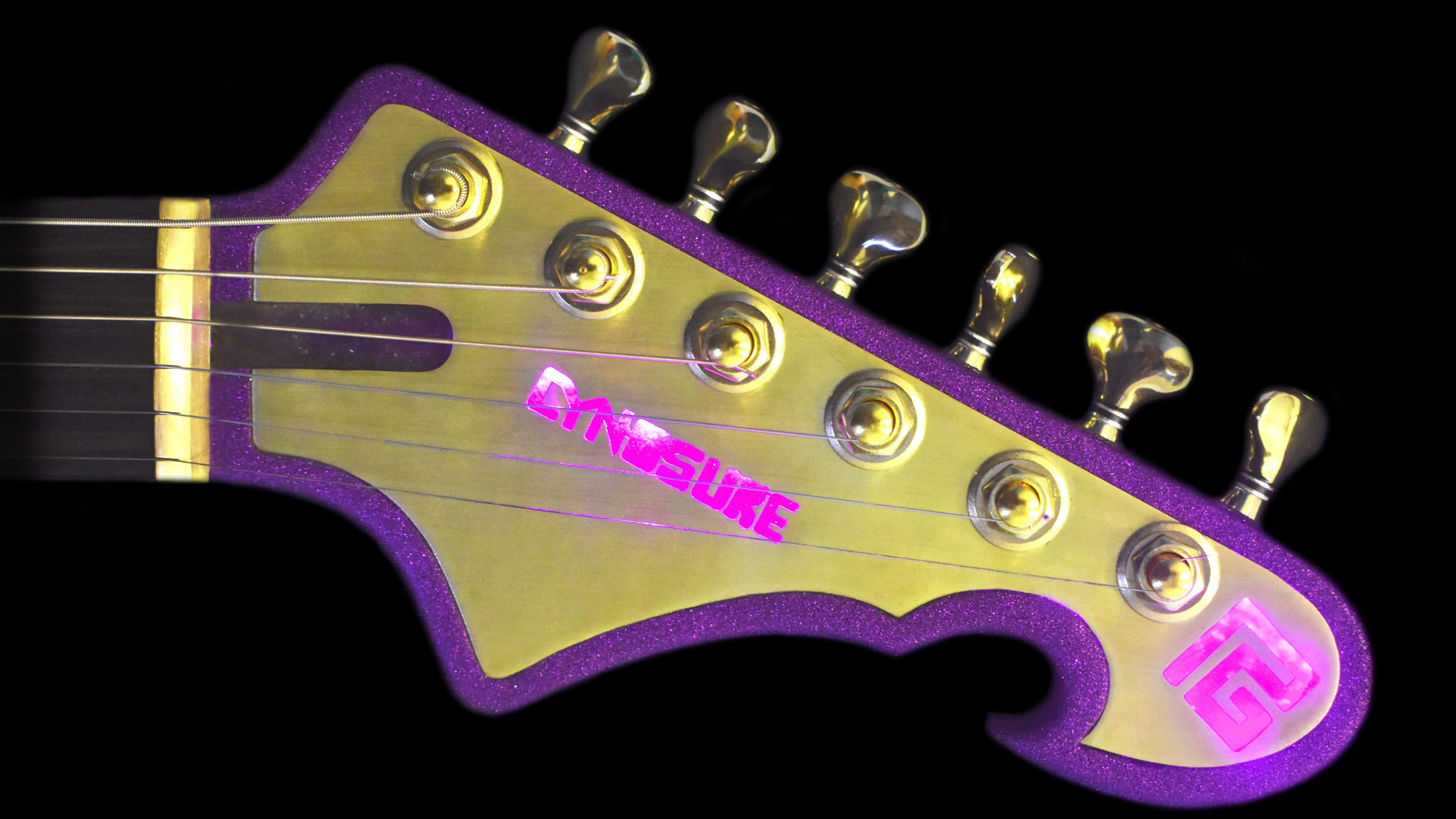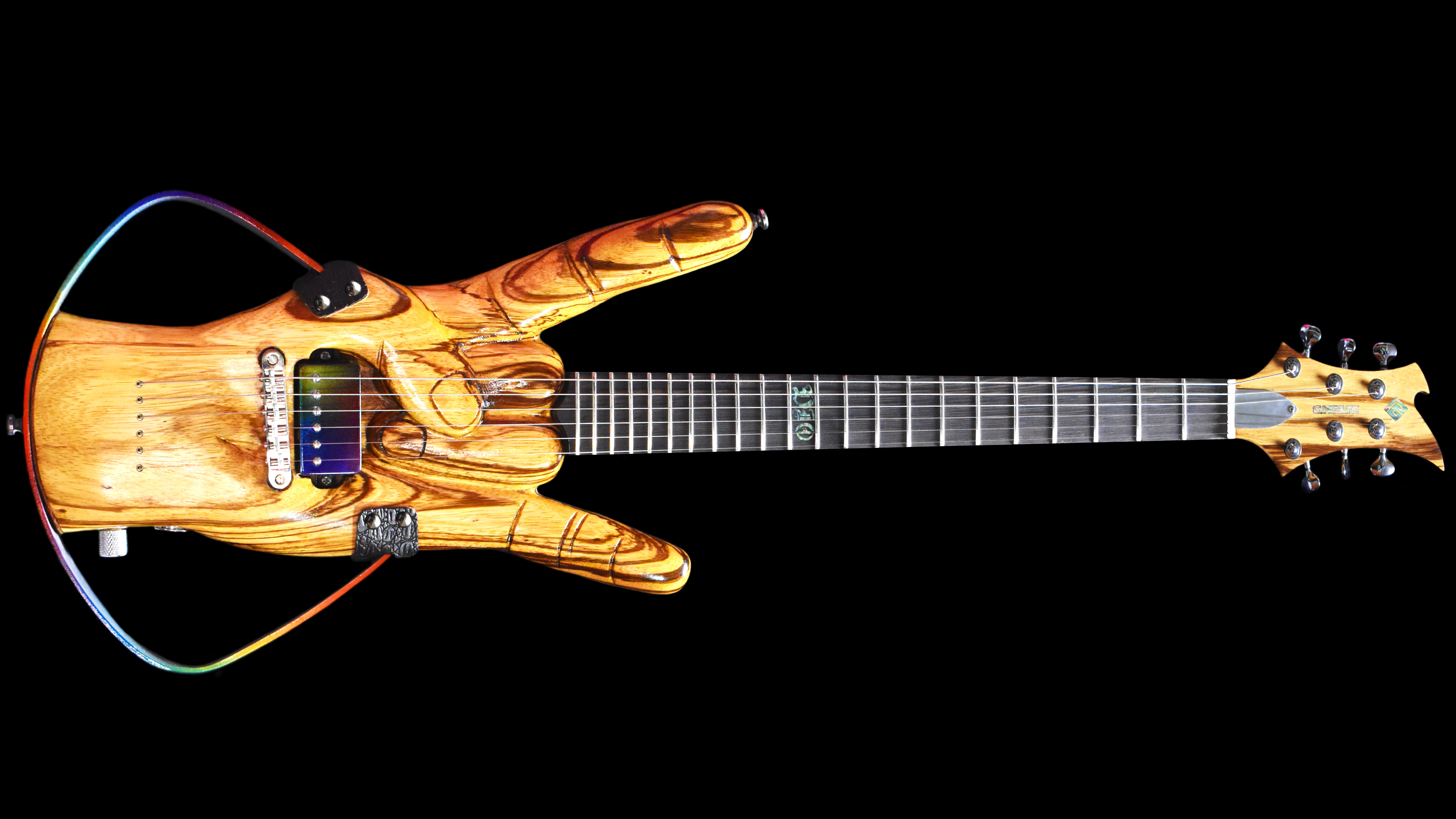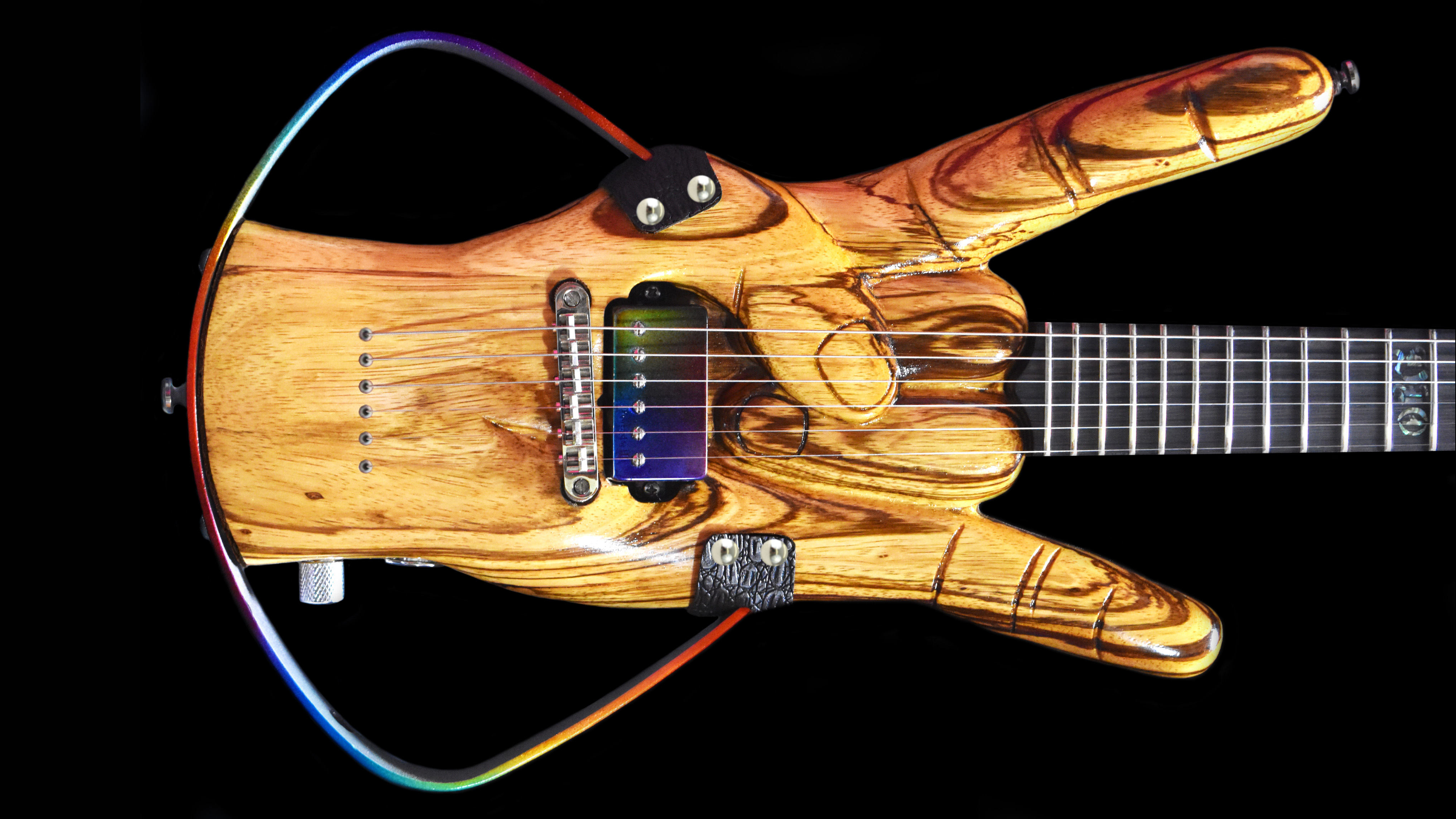
The UK's Bloodstock festival is happening next month, which is reason enough for celebration after so much bad news for live music. The event now spans five days (one extra for this 20th anniversary year) showcasing an incredible array of established and upcoming metal and rock talent including Judas Priest, Devin Townsend, Kreator, Sylosis, Paradise Lost, Cradle Of Filth and Napalm Death.
No wonder weekend tickets have sold out (limited day tickets are still available here) and to mark the occasion the festival will exhibit four stunning, specially commissioned electric guitars by UK-born and Florida-based luthier, artist and musician Oliver Andrew AKA Cynosure.
Every year Bloodstock hosts a bespoke RAM art gallery curated by festival founder and renowned fantasy Paul Raymond Gregory and he has commissioned Cynosure to make handcrafted guitars for the event based on a theme since 2014.
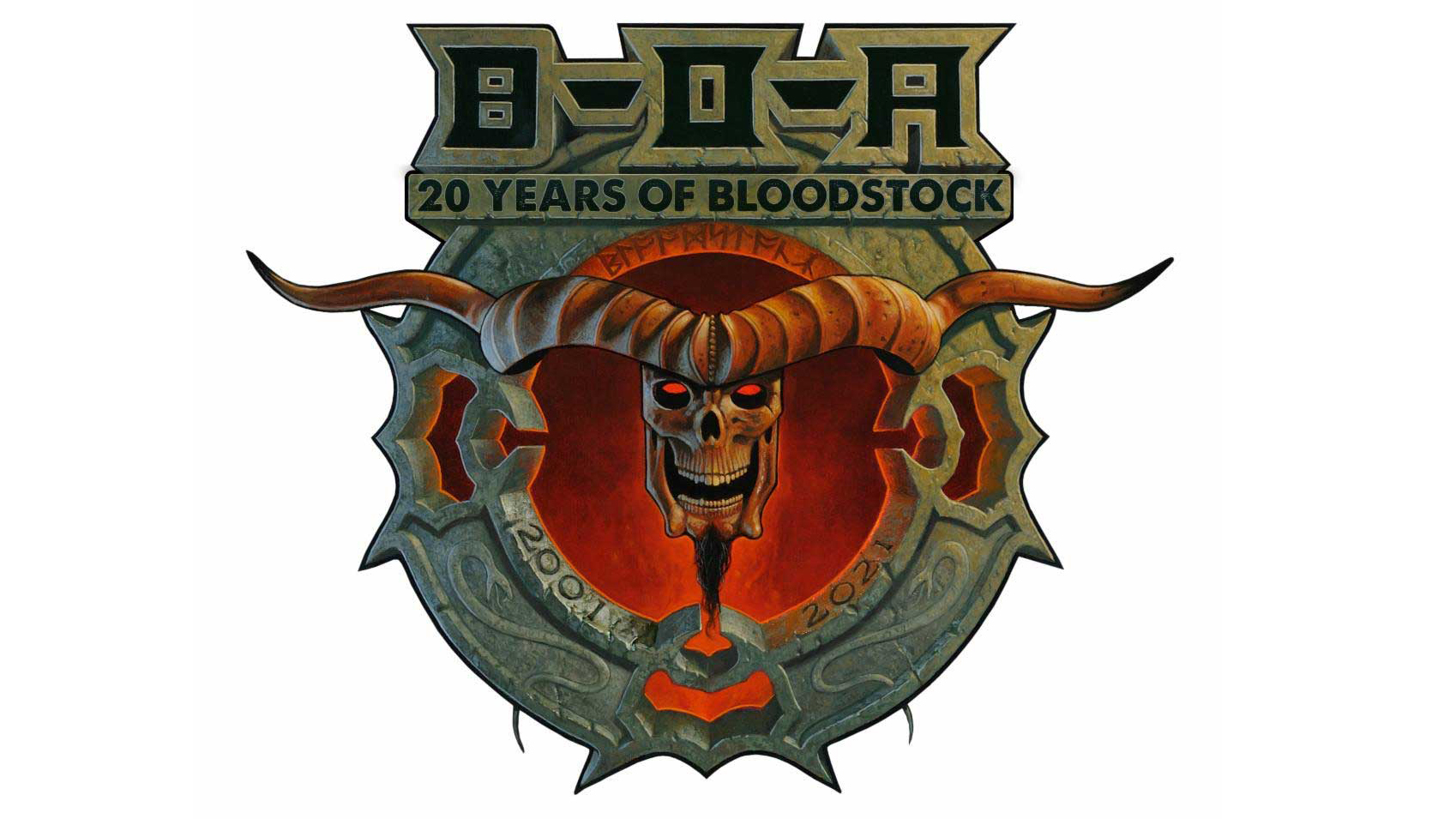
Because the 2020 Bloodstock was cancelled due to the pandemic, there are now four Cynosure guitars ready for 2021's 20th anniversary. The first two (we'll have more news on the others soon) are a special 'Purple Haze' Jimi Hendrix-themed instrument marking the 50th anniversary of his passing last year and the second commemorates 10 years since Ronnie James Dio's passing. The main stage at Bloodstock is named after the late vocal legend.
Here, Oliver Andrew reveals the inspiration and process behind both guitars…
He's an inspirational, influential character who made a huge impression on me
Tell us about the genesis of the Hendrix guitar.
“Paul [Raymond Gregory] approached me last year while I was in the RAM Gallery and he reminded me that the following year would be the 50th anniversary of Jimi Hendrix's death, which is an extremely important thing to take into consideration,
Want all the hottest music and gear news, reviews, deals, features and more, direct to your inbox? Sign up here.
"This rock 'n' roll icon essentially reimagined the playability of the electric guitar, and he deserves a commemorative piece himself. For me, Jimi was just one of those iconic figures, as I'm sure he is for everyone who enjoys electric guitar, or just music in general. He completely reinterpreted the electric guitar and its functionality, and opened up several different avenues in music itself, in terms of genres and the possibilities for the creation of music.
"He's an inspirational, influential character who made a huge impression on me. So, for me to be able to do this is not only a luxury and a honour, but definitely something I think will help define the RAM Gallery, and possibly me as an artist as well.”
Do you think younger rock and metal fans fully appreciate Jimi's influence on the development of heavy music?
“When you get that first impression, and then think how time has moved on, and now there are so many different styles and genres and capabilities... but I don't think everyone appreciates the advent of that person and his style at that particular time. It like when a horror film comes out – say, 'The Exorcist'. I don't think now it has the same impact as it did when it first came out.
"You really have to get an appreciation and understanding of that time period and what it meant to people on a social level. But ultimately, I think when you first come into contact with something or somebody you get that initial impression, but as time goes on and you revisit it, I honestly think you get a different level of grounding and appreciate that person even more for what they've contributed.”
Although it does remain distinctive in its own concept, it does pertain itself to the idea of a Stratocaster
How did you approach the initial design of the guitar?
“His iconic instrument was the Fender Stratocaster, a very iconic visual in itself, and I will go so far as to say that I am not a fan of the Strat, ha ha! The reason is that it is just so iconic; it's the silhouette of what an electric guitar is, on many levels and by many standards. Throughout my career as a guitar luthier I always wanted to get away from that, and I promised myself I would never build a Stratocaster [style guitar] ha ha! But here we are!
"So, that was the inspiration, and because it's so iconic and has that very firm relationship with Jimi Hendrix, it only made sense to create a Stratocaster. But there will always be alternatives to the norm, and this is a Stratocaster which is completely different from a regular one, in terms of its construction, its visuals, the whole aesthetic. Although it does remain distinctive in its own concept, it does pertain itself to the idea of a Stratocaster.
"So in its shape, it's a Stratocaster, but in terms of everything else, it's very unique. It's all about functionality as well, Personally, I cannot play a Stratocaster, and the reason for that is the three single coils in that particular configuration. For me it really precludes the playability. I really admire people like Stevie Ray Vaughan, Yngwie Malmsteen, and Hendrix who've made it their instrument, but for me, I knock the middle pickup with my pick. I can't help that. Maybe it's just my style of playing, I don't know. So for this one, I really had to reorganise the configuration of pickups.”
So, despite the variations you still feel it has the Stratocaster spirit?
“Well I guess the iconic imagery of the Strat is the shape itself, and I'm assuming the configuration of the pick-ups and the wiring. Beyond that, any modifications are open to interpretation, whether it's a Strat any more or not.
"I know for instance Steve Vai has a lot of Strat-type guitars with Ibanez, and he produced the JEM, which is a sort of Strat-looking thing, but in terms of its electrics, it's completely different. As for this creation, I would consider this a Stratocaster as it's based on one.”
When would someone first notice the differences?
“Well, you will notice the differences absolutely immediately. Some things are more subtle, some are a lot more prominent. I've called this guitar 'Purple Haze', after the iconic song. The paint is a sort of iridescent, purple sparkle, which alludes to the regal representation which mirrors Hendrix's expertise and playing proficiency.
"So, the rich regal colour really represents Jimi as an artist. He was a king of rock 'n' roll and that's really what I want to state.”
Tell us more about the construction and the look.
“The construction is a semi-hollow body with GFS pick-ups which are absolutely incredible. I wanted to create that sort of 1960s rock'n'roll sound. Sort of bluesy rock with a slightly harder edge. There is one single-coil in the neck position and a humbucker in the bridge position. So it's three single-coils essentially but in a configuration so you have that space in between, so anybody like me can actually play the thing, ha ha!
"The body itself is a multi-laminate, several strips of wood, comprised of purpleheart, maple, and wenge. All these woods have different properties of tone and strength. The headstock is unique to me. It's quite serendipitous because I sort of created it by accident.
"Initially I based it on a BC Rich ASM headstock which is absolutely alluring, I love it. So I initially created this Hendrix guitar with that headstock but then realised it was too spiky for the body. So I redid it as something more curvaceous but when I was routing it out, I accidentally slipped, and it created a gouge in the headstock. So I sat back for a minute to see what I could make of it and I realised that I actually loved the mistake. And now I absolutely adore it!
"The whole back is removable as a backplate. It has brass panelling with elaborate designs, including Jimi's face, which are actually drilled into the plates themselves. There's also a floral pattern very synonymous with the 1960s, the pop culture of the time. There are also two sections of brass panelling on the front. The fret markers also light up in purple, controlled by a three-way switch for three different configurations. It's very eye-catching, so it's not just the paint that draws you in.”
For me as with everyone else, he's such an iconic figure due to his efforts creating this genre
Where do you feel Ronnie sits in the pantheon of great rock and metal frontmen?
“Ronnie James Dio was one of the most prominent figures in rock'n'roll and metal history, and absolutely pioneered the shaping of the genre itself and also what goes along with the music – the imagery, and the lyrical content. He was an iconic figure who created a whole mythology around rock and metal.
"It wasn't just flippant music for the sake of music, it had really deep meaning, a whole ethos behind it, every human emotion, history, literature, and the legacies of cultures. He helped really define the concept of this music, not just from a musical standpoint, but from the imagination.
"For me as with everyone else, he's such an iconic figure due to his efforts creating this genre. I definitely think he achieved such a stance and such a platform due to his sheer creativity. He was definitely one of the more adventurous people in music and his legacy lives on, within the music, the artwork, and the social, community, and cultural aspects. He was a pioneer.”
How did you discover his music?
“I started to get into Dio primarily through Black Sabbath. I was brought up with Black Sabbath so I always had a propensity towards this type of music. I gravitated more towards Dio because I preferred his vocal range and his voice in general to that of Ozzy Osbourne, and he had a lot more to say.
"One of the first albums that I listened to which helped me recognise Ronnie was actually Heaven And Hell, and the iconic title track. From that point onward I discovered his other works with Rainbow, Elf, and that again brought up a whole new lexicon of thoughts and ideas which appealed to me.”
Ronnie re-united with his former Black Sabbath band mates under the banner Heaven and Hell who were scheduled to perform at Bloodstock in 2010, although tragically Ronnie passed away just months before. It was a great loss for Bloodstock and for the metal community worldwide.
“Part of his legacy would have been to perform at Bloodstock and it would have been amazing for the festival. However, his legacy does live on within Bloodstock, not least in the naming of the main stage as the Ronnie James Dio stage. I was always a fan of Ritchie Blackmore as well and his work within Deep Purple, so there's a lot of crossovers with Ronnie, and he definitely elevated the bands which he performed in. It's very important to mention.
"Of course Black Sabbath already had a very high profile career but Ronnie took them – and Rainbow - to another level. Everything just had a new platform on which to create and to move forward. I definitely think that his attitude helped influence a whole generation of other bands. He's definitely one of these figures that had some sort of mysticism around him. His legacy will always continue.”
How did you come up with the overall design for the Dio guitar?
“Paul [Raymond Gregory] and I had a back and forth about things, but I guess everything came down to what Ronnie James Dio was really known for, and essentially the guitar is a 3-D carved representation of the iconic hand gesture which he helped popularise.
"As he stated in so many of his interviews, the idea for this gesture came about when he joined Sabbath. Ozzy was well known for doing the peace sign during concerts and Ronnie wanted to connect with fans in a very similar fashion but with his own signature twist.”
It was exceptionally difficult, but we could not think of anything more iconic and synonymous with Dio
It must have been extremely challenging to turn the concept into an actual piece?
“It was a pain in the bloody arse! Ha ha! It was exceptionally difficult, but we could not think of anything more iconic and synonymous with Dio. It's instantly recognisable. If you walk into a gallery and see this guitar on the wall, you don't need to be close to recognise what it is. But in terms of playability and ergonomics, it was a complete pain!
"We have the base structure, which is the hand, which is carved. As you can imagine, that would be slightly top-heavy, so I had to formulate a way to make it comfortable and recognisable as a guitar. I did this by using a flat piece of iron and bending it and bolting it to the wood itself. So we have this hand gesture surrounded by a flat iron bar and that creates the edging.
"It does look somewhat like a Fender Stratocaster but with two hollow sides, the spaces between the wood and the metal. That allows for a lot of the other creative aspects of the guitar. For instance, the volume control and the input jack are actually on the side of the 'wrist', I guess you would call it, not where you would expect on regular guitars.”
What can we expect in terms of materials, colours, finish and, of course, electrics?
“It's 25.5 inch scale, and the fretboard is wenge wood which I've used throughout the RAM Gallery guitars. The body is zebra wood which I think should be called tiger wood as it's more like a tiger than a zebra. It's a sandy colour with dark striations and flecks of brown and black. A pattern like this was used with Dio's Holy Diver music video, and you see Ronnie wearing a patch or strip of what looks like animal fur.
It's a very simple set up. One pick-up, one volume, that's it! But it's a show-piece
There's just one humbucker pickup to allow for the carving of the fingers. To add any more I would be routing into the fingers and it would destroy the design. The overall design definitely affects the the hardware which is quite a contrast to the wood. The fret marker inlays are actually comprised of abalone, which is a sea shell, and it has a natural rainbow effect within it, which again contrasts with the colour of the wood.
"Ronnie was very well known for the contrasting elements within his music, heaven and hell for instance, these polar opposites, and that's something that's represented in this design. It's a very simple set up. One pick-up, one volume, that's it! But it's a show-piece. It's something that's made to be played on stage. The humbucker, the tuners, and the bridge are rainbow coloured. It's slightly garish but not too much! So it's all very contrasting and there's no other guitar like this in the entire world!”
For more information on Cynosure visit cynosureguitars.com. Bloodstock takes place 11-15 August – visit bloodstock.uk.com for more info and day tickets.

Rob is the Reviews Editor for GuitarWorld.com and MusicRadar guitars, so spends most of his waking hours (and beyond) thinking about and trying the latest gear while making sure our reviews team is giving you thorough and honest tests of it. He's worked for guitar mags and sites as a writer and editor for nearly 20 years but still winces at the thought of restringing anything with a Floyd Rose.
